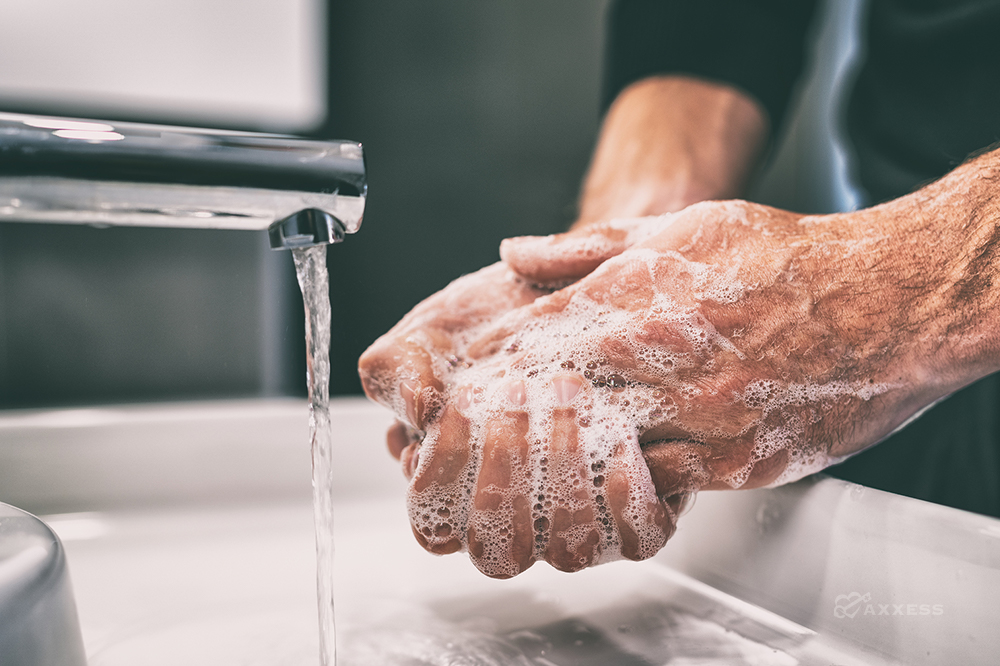
During the COVID-19 pandemic, it is important to remember the usefulness of the bag technique and how it reduces the likelihood of passing microorganisms between patients, while also minimizing the possibility of contaminating the clinician’s home. A proper bag technique will help with infection management. As always, follow your organization’s policy and discuss any questions with your organization’s infection management professional.
Hand Hygiene
Proper hand hygiene is paramount before entering the clinician’s bag. It is required to perform hand hygiene after touching the patient’s skin and items in the patient’s vicinity, as well as after the removal of gloves, which helps eliminate risk. Keep hand hygiene items on the outside of the clinician’s bag as a visual reminder. Also, jewelry can trap microorganisms and need to be removed and cleaned.
Bag Hygiene
When opening the clinician’s bag, do not open a flap in a manner that would allow it to touch surfaces in the patient’s home. Wheeled bags should remain on the floor of the patient’s home. If your organization’s policy is to use a barrier for wheeled or non-wheeled bags, do so. When items are removed from the clinician’s bag, use a barrier between the items removed and the surface of the patient’s home. Barriers should be water-resistant and single-use. Examples are wax paper, chux/disposable pads, or plastic bags. Newspaper and paper towels should be avoided, as these materials wick water up and may transmit pathogens to your bag.
Always ensure the bag is placed on the cleanest surface possible in the patient’s home. Another option is hanging the bag on a door or hanger. The bag should remain closed when the clinician is not actively obtaining items. Also, do not load the bag so that it tips over and touches the surfaces of the patient’s home. Clean the outside of your bag regularly and especially when it is visibly soiled.
There are times when you would not want to bring your clinician’s bag into the patient’s home. One example would be if the patient is on transmission-based precautions or has a multi-drug resistant organism. Another would be if there are pests inside the home or there is excrement in the home environment. Clinicians should use their judgement if it is best only to bring items they need for the visit into the patient’s home. If you decide to carry those items needed during the visit, double bag the items using disposable plastic bags and leave the outer bag in the patient’s home. After appropriate disinfection, you can bring items out of the home using the inner bag.
Bag Technique Myths
Contrary to popular belief, there are no clean and dirty sides of the bag. All internal areas of the clinician bag should be considered clean. If you have medical waste, dispose of it in the patient’s home. For red bag waste and sharps, their containers should be outside of the bag.
For reusable equipment, follow your organization’s policy for disinfecting items before they are return into the clinician’s bag. This includes your stethoscope, sphygmomanometer, pulse oximeter, thermometer, but also the computer/tablet and mobile phone. Remember that for disinfectants to work effectively; the disinfectant needs to air dry on the surface of the item. When possible, avoid bringing non-essential items into the patient’s home.
In your car and home, ensure that your bag is on a clean surface just as you would in a patient home. Store your bag in a temperature-controlled environment per the manufacturer’s recommendation for any disinfectant or testing supplies inside the bag.
While no technique will guarantee the elimination of passing infections, an effective bag technique is one of the most reliable ways of ensuring that hospice and home care professionals are doing their part to reduce the risk to our patients, clients, and families.
